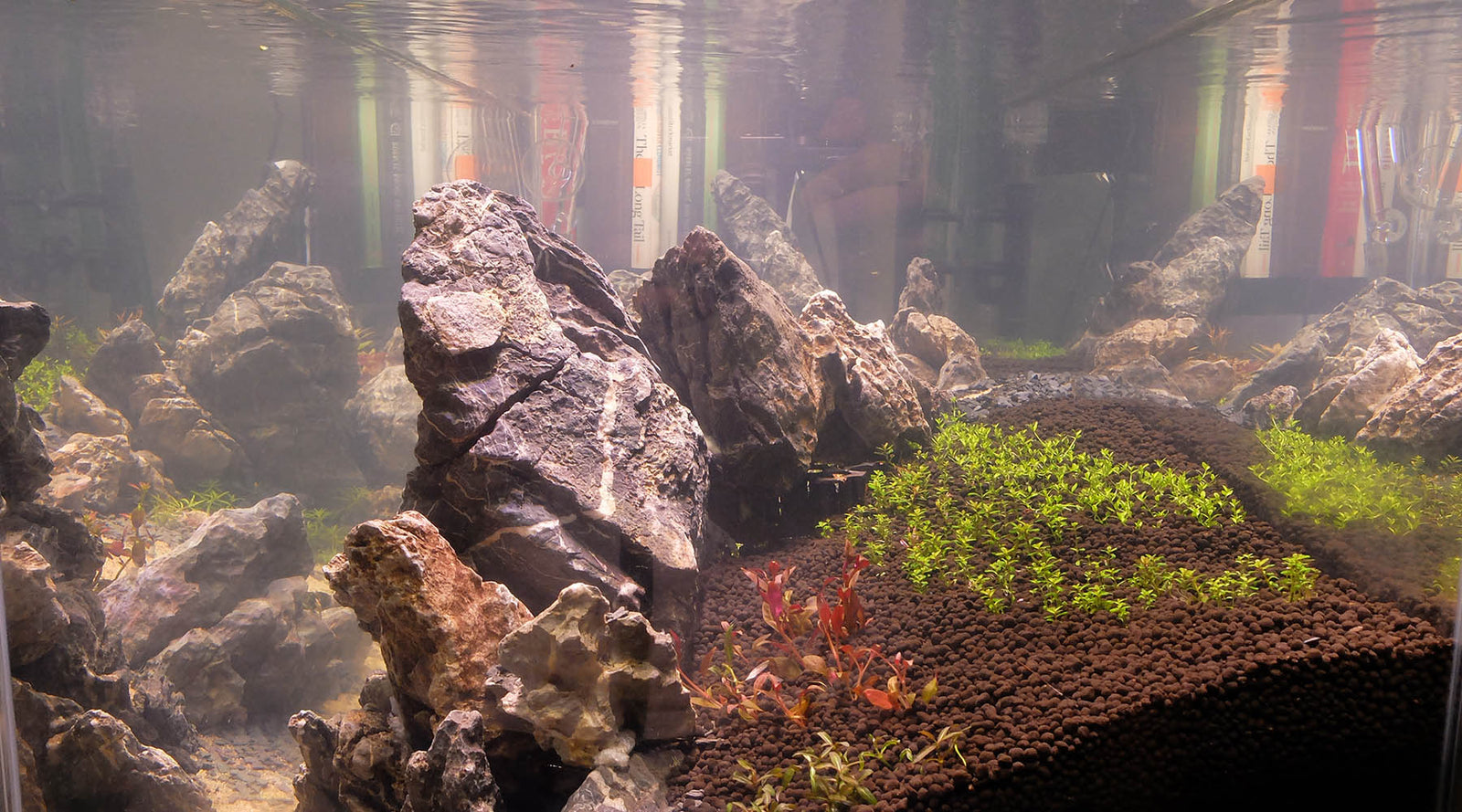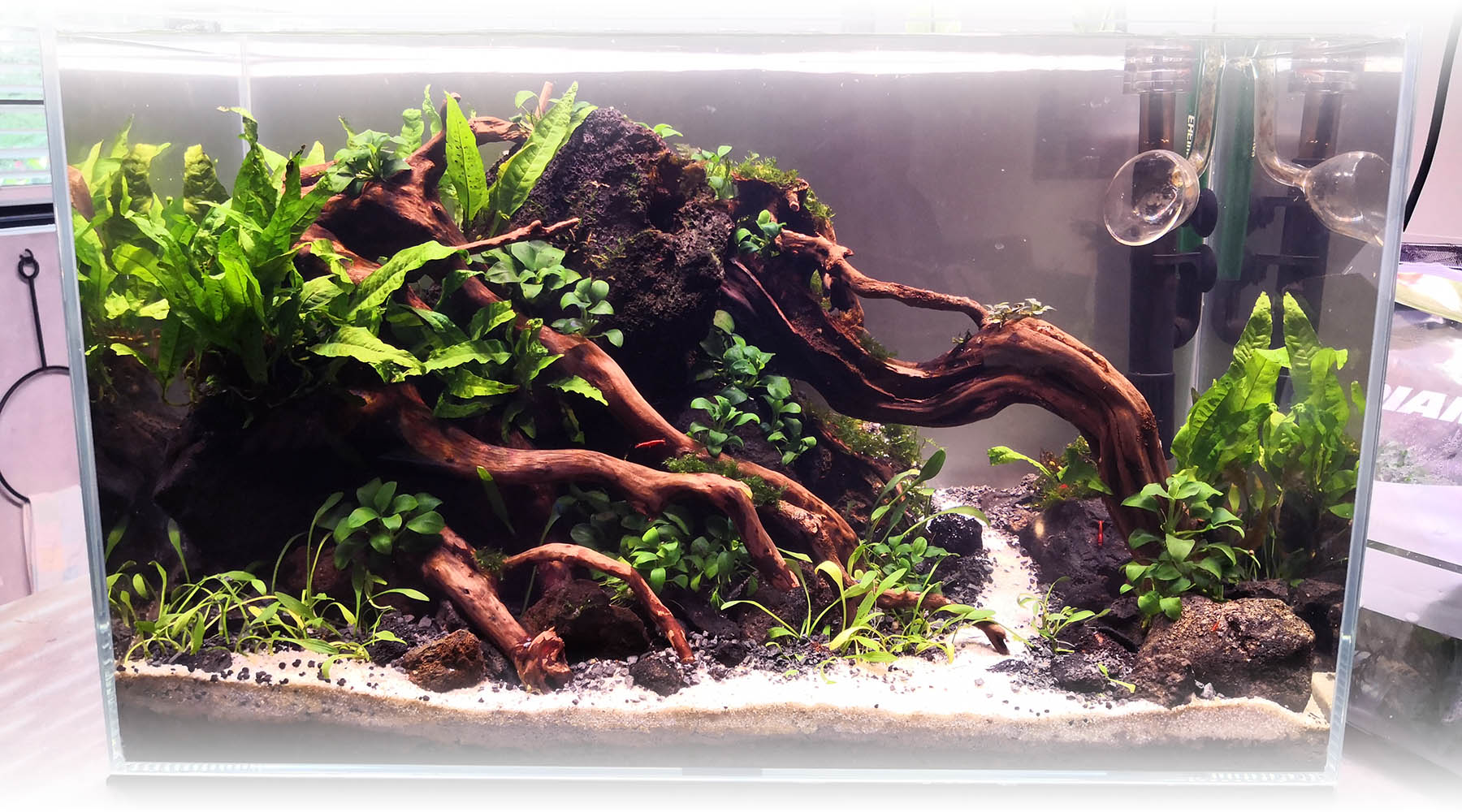
Above: when do we start adding fertiliser to a newly planted tank?
Foliar Feeding
Spraying nutrients directly onto leaves is often used to save terrestrial plants that have damaged root systems. It is also used in farming as it takes less time for nutrients to reach the growth tips of plants, compared to root feeding, where nutrients have to be transported from root zone to the growth tips.
While land plants require moisture to absorb nutrients through its leaves, aquatic plants, which are underwater, can do so any time. In science-speak, aquatic plants have adapted to have reduced cuticle formation and often take on more finely pinnate leaves. These underwater growth forms enable better gaseous exchange and also more efficient uptake of nutrients from the water column.
Can you summarise?
The simple concept is that all plants absorb nutrients through their leaves, and aquatic plants especially so.
Above: In a newly planted tank, the plants would not have fully developed roots. Having nutrition in the water that they can absorb through their leaves helps to accelerate their adaptation to the new tank.
So contrary to popular notion, it is best to start fertilising a newly set up aquarium immediately after planting.
But wouldn’t this cause algae?
It remains important to properly cycle a tank at least 2 to 3 weeks before planting. Adding fertilizer to a new tank without proper cycling does indeed invite algae to bloom.
In properly cycled new tanks with aquasoil such as the ones shown above, the safest way to avoid algae issues is to start with a fertiliser that has much less or no nitrates and phosphates, such as APT Zero. This provides nutrition in a more measured way in the water, enough to aid plant adaptation but below the threshold that tends to trigger algae.
We then transit to more comprehensive water dosing after about 2-3 months, through APT Complete. By then, overall plant mass would have increased, and the nutrients available in fresh aquasoil would have been depleted.
